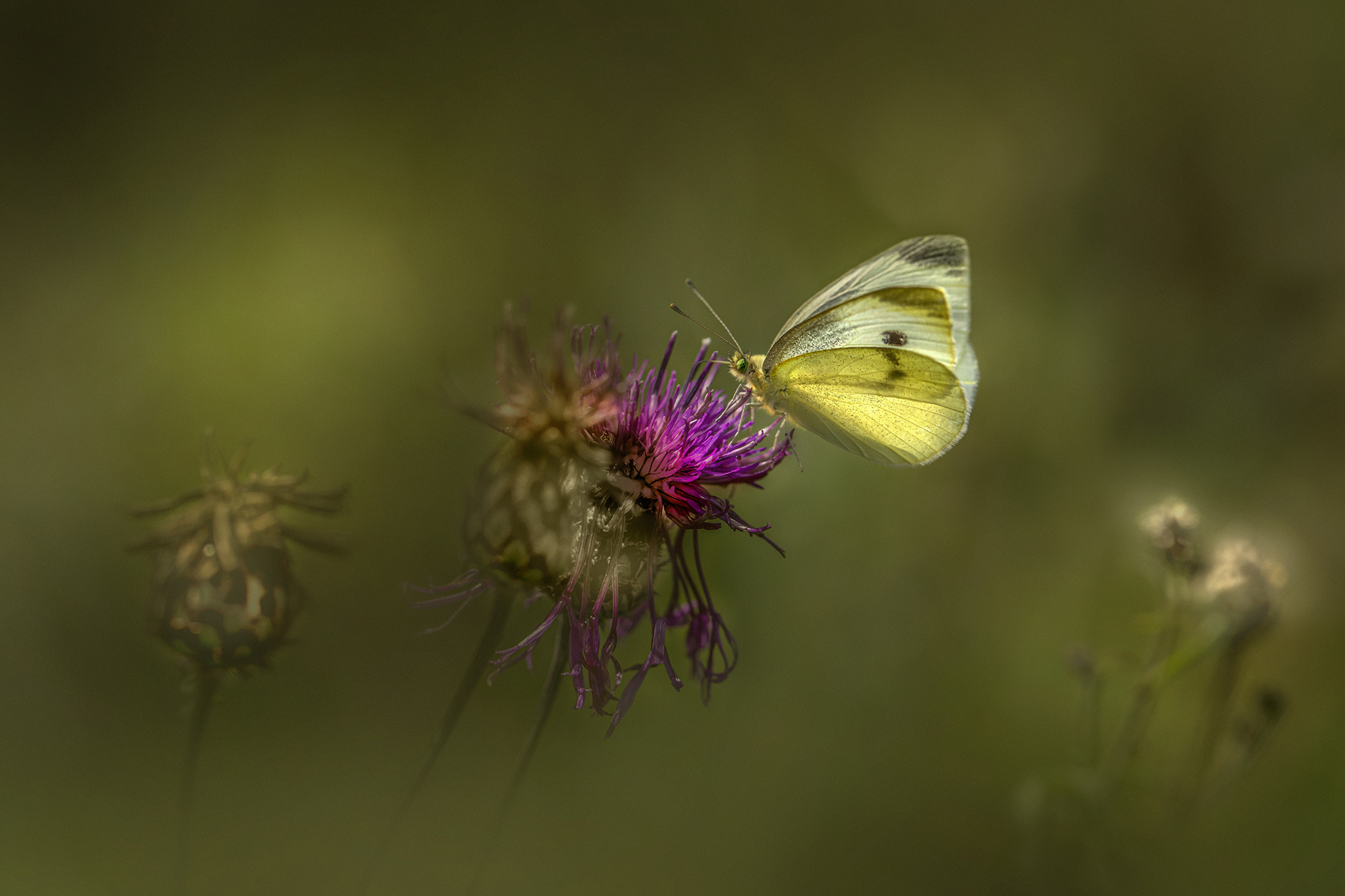That’s a lovely choice! The Green-veined White (Pieris napi) is one of the most common and widespread butterfly species in the world, belonging to the family Pieridae (the Whites and Sulphurs). It is often distinguished from its relatives by the prominent dark veins on the underside of its wings.
Here is a deep review of its key characteristics, life cycle, and ecology.
🦋 Green-veined White (Pieris napi) Deep Review
1. Identification and Morphology
- Family: Pieridae (Whites and Sulphurs)
- Size: Medium-sized, with a wingspan typically ranging from 40 to 50 mm (1.6 to 2 inches).
- Upperside Coloration: Both sexes are predominantly white with black tips on the forewings.
- Females usually have more extensive grey or black markings (spots) on the forewing than the males.
- Underside (Key Feature): The distinguishing feature is the prominent greenish-grey or dark scaling along the veins on the underside of the hindwings. This scaling is particularly noticeable in the first (spring) generation and helps camouflage the butterfly when resting among foliage.
- Seasonal Variation: The species exhibits seasonal dimorphism:
- Spring Generation (P. n. napi): Heavily marked with dark, obvious green-grey scaling along the veins.
- Summer Generation (P. n. napaeae): Much lighter, with reduced or almost absent greenish scaling on the underside, making it look much whiter.
2. Habitat and Distribution
- Geographic Range: Extremely widespread across the Holarctic region, encompassing almost all of Europe (from the Arctic Circle south to the Mediterranean mountains), temperate Asia, and North America (where the closely related Pieris virginiensis is sometimes considered a subspecies).
- Habitat Preference: A generalist that prefers moist, slightly shaded environments compared to the drier habitats favored by the Large or Small White:
- Woodland edges, clearings, and rides
- Hedgerows, riverbanks, and marshy areas
- Gardens and meadows with long grass
- Residency: It is a resident species across its range and does not typically migrate long distances like the Large White (P. brassicae).
3. Life Cycle
The Green-veined White is multi-voltine (having multiple generations per year), typically two to three generations depending on the warmth of the climate.
| Stage | Detail |
| Adult Flight | The first generation emerges early (April to June), and subsequent generations fly through the summer until September/October. Adults are active fliers and strong nectar feeders. |
| Larva (Caterpillar) | The caterpillar is generally green with fine black dots and a thin, yellowish stripe along its sides. Unlike the gregarious Large White, P. napi caterpillars are solitary and blend well with their host plants. |
| Host Plants | The larvae feed on plants belonging to the Brassicaceae family (cabbages, mustards, cresses). Key hosts include: Garlic Mustard (Alliaria petiolata), various cresses (e.g., Watercress, Hairy Bittercress), and sometimes wild members of the cabbage family. |
| Pupal (Chrysalis) | The chrysalis is typically pale green, grey, or yellowish and attaches itself to a stem or wall with a silk girdle and cremaster. The butterfly overwinters in this pupal stage. |
4. Ecological Role
- Pollination: As a common and abundant nectar feeder, the adult butterfly is an important pollinator for many wild and cultivated flowering plants.
- Predator Defense: The caterpillars’ solitary nature and excellent green camouflage are their primary defenses against predators, unlike the warning coloration and gregarious defense used by the Large White.
- Agricultural Impact: Unlike the Large and Small Whites, which can be significant pests of cultivated Brassicas (cabbage, broccoli), the Green-veined White typically prefers wild host plants like Garlic Mustard, meaning its impact on commercial agriculture is generally negligible.
Visited 842 times, 35 visit(s) today
Views: 1513
Subscribe to the newsletter:
